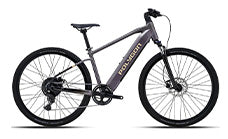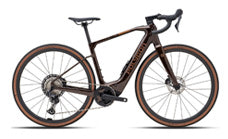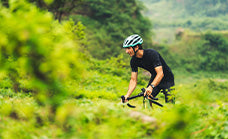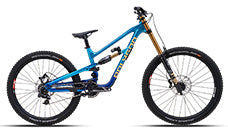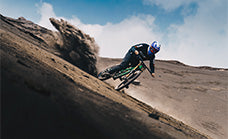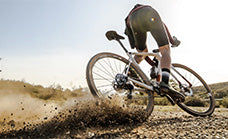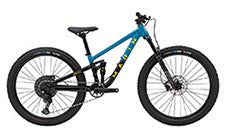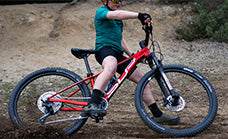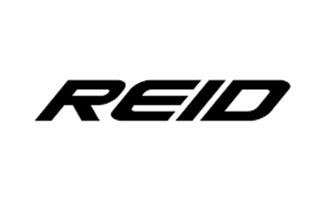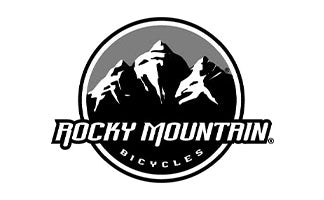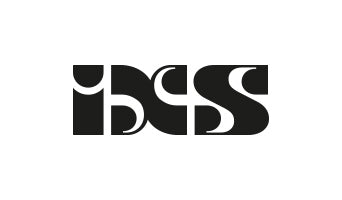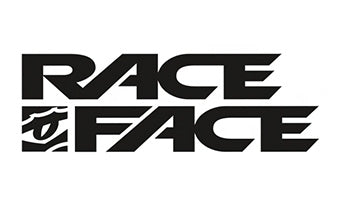Buying Your Kid's First Bicycle: Everything You Need to Know
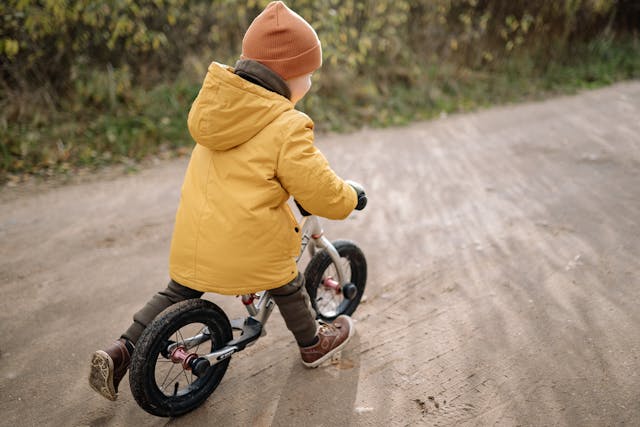

Buying a bike for a child can be fun. It can be a whole new world that you’re stepping out into and you’re worried about buying the wrong thing or being missold. We’ve talked to lots of parents and we’ve put the answers to the questions that come up time and time again below, to help you come to the best choice for your child.
Should we get training wheels?
No. Training wheels or stabilizers don’t teach a child how to balance a bike; they keep your child stable. That may sound safe, but balance is the most important step in learning to ride a bike, it is even more important than pedaling.
Once you remove the training wheels, you effectively have to go back to the first steps of riding and teach a child how to balance. That is why we, and the rest of the experts, recommend starting with a balance bike.

Balance bikes are preferable over training wheels that don't teach a child to balance or corner correctly.
The way training wheels balance the bike will also teach your child how to corner incorrectly. A skill they will then also have to relearn when you remove the stabilizers. Make cycling easier to learn and start with a balance bike, and they’ll also be a lot lighter and easier for your child to control.
How do I know when to get the correct size?
To make it easy we’ll start with a chart and then give you some advice about when to size up.

Remember the age part of the chart is a rough guide; children don’t always want to grow according to the average child. You should, therefore, pay more attention to the height part than the age part.
The easy way to know if your child has outgrown their current bike is to watch them ride it. If their knees and elbows are sticking out, then they are trying to make themselves smaller to fit the bike. You can then either make height adjustments using the saddle or handlebar, but if you’ve reached the limit, it is time for a new bike.
What you want when your child is riding a bike is for their leg to be almost fully extended when their pedal is at the 6 o'clock position. If they are pushing their foot out to the side, then the seat height, or bike, is too small. The elbow similarly should have a small bend when your child is holding the bars.

A well-fitted bike allows for a slight bend in the elbows when reaching for handlebars and a slightly bent knee with the pedal in the 6 o'clock position.
The “They will grow into it” fallacy
When we were a child, we more than likely at some point had a bike we would grow into, and this fits into the “it never did me any harm” comment. The problem is, this is not a safe way to buy a bike, and you also run the danger of putting your child off cycling or causing harm to them.
The extra weight of a bike too big for your child is likely to make it heavy for them to pick up and they’ll have difficulty controlling it. The difficulty in controlling it will also be confounded by the bigger reach to the bars, by making your child stretch they won’t have as tight a grip on the bars as they should.

A well-fitted bike gives your child adequate control over it and helps them enjoy riding.
The stretch issue will also affect how they reach for the brakes, and whether or not they’ll even be able to pull them. These issues can be dangerous, and they also bring a high likelihood that by the time your child is big enough to ride the bike, they no longer care about their bike.
We also understand that you want to maximize your investment, that is why buying a bike from a recognized brand like Polygon and Marin is a good step. When your child is too big, you’ll find the second-hand market will give you a fair price. Cheaper bikes will take in less as a percentage of the retail price when it comes time to move them on.

Should I buy my child a BMX?
The answer to this is both yes and no. If your child wants to ride skateparks, pump tracks, or BMX tracks, then yes as a child’s bike won’t like that abuse. If you want them to cycle to school or come on small rides with you then no. We have an article that goes into more detail on why and why not, give it a read.

What spec of parts should I get on my kid’s bike?
The simple answer is the best that you can afford. That may seem like a typical sales answer, but we do have some good reasons why. The better the spec of a bike, the lighter it will be. Saving a few 100 grams doesn’t matter to an 85kg adult but saving a few 100 grams when your 20kg child is much more helpful.
The brakes will also operate more efficiently and will be easier to pull. As a parent watching your child ride, you’ll have a few moments where you’ll feel your heart is going to explode. Knowing your child can safely stop is both safer for them and a lot safer for your cardiac health.

Brakes like those on the Marin Hawk Hill Jr. help your child to stop safely.
Gears will also be easier to change if the bike has them. The easier they are, the more likely your child is to use them. If they are too hard for your child to change you’ve then paid for something you didn’t need. Keep an eye out for Shimano Revoshift gears, easy to use and intuitive to kids learning to ride a bike.


Some kids bikes, like the Polygon Relic 20 feature gears which make pedaling easier, encouraging your child to use their bike more.
The resale value of a good kid’s bike will be higher. We mean this as a percentage of what you paid, not just because the bike was more expensive. If cost is a primary concern a more expensive bike will save you more money in the long run. It will be less likely to break and need new parts, which might be hard to source for cheaper kid’s bikes. Your child is also more likely to keep riding as the bike isn’t a hassle.


